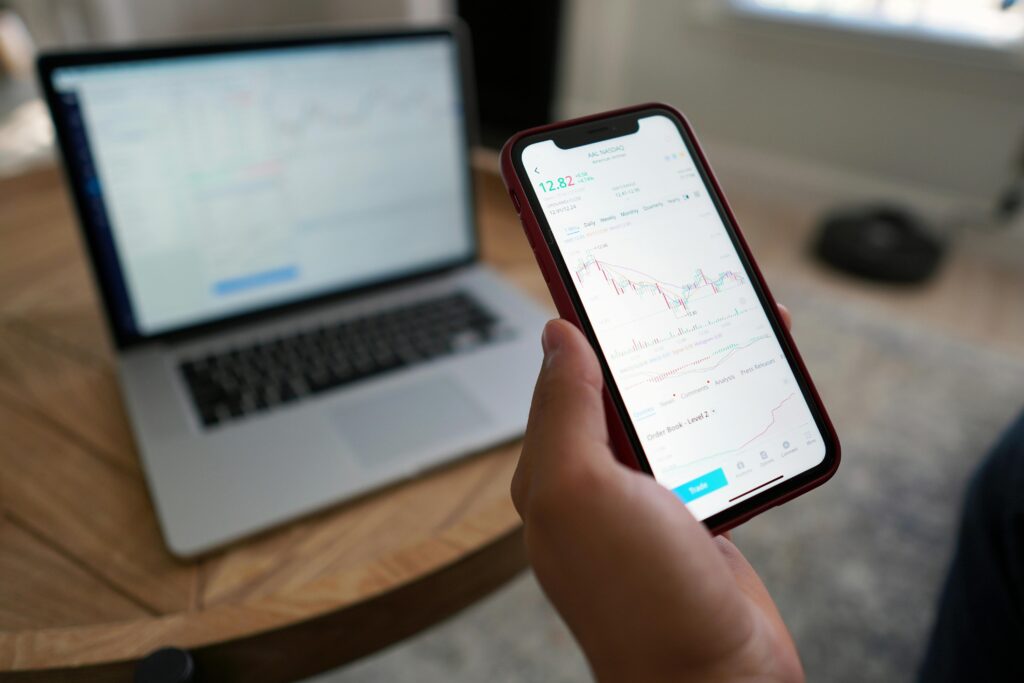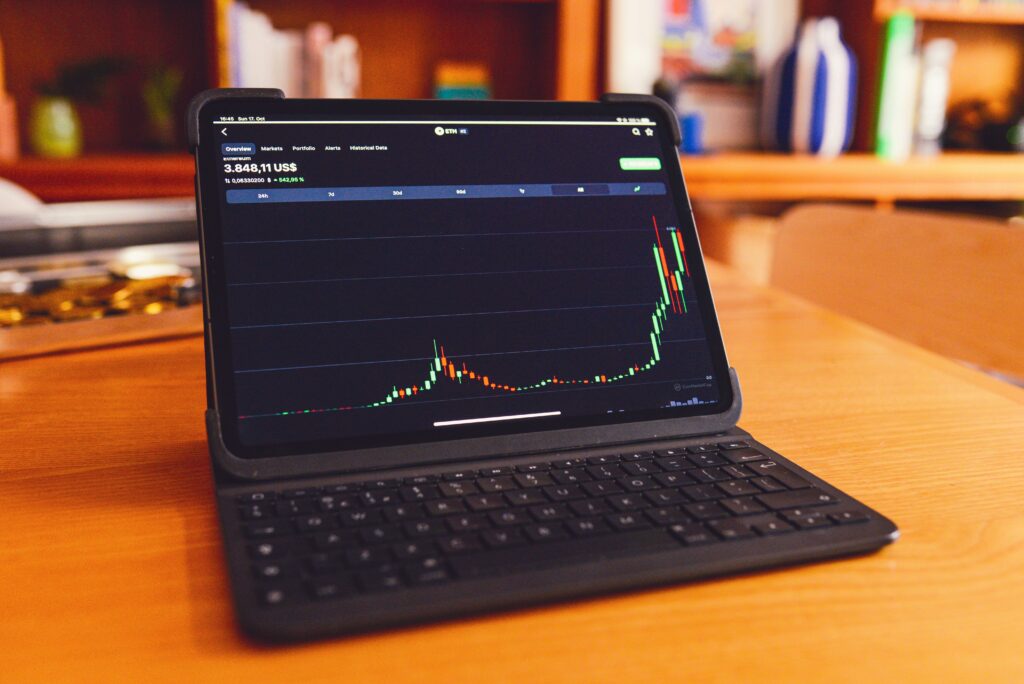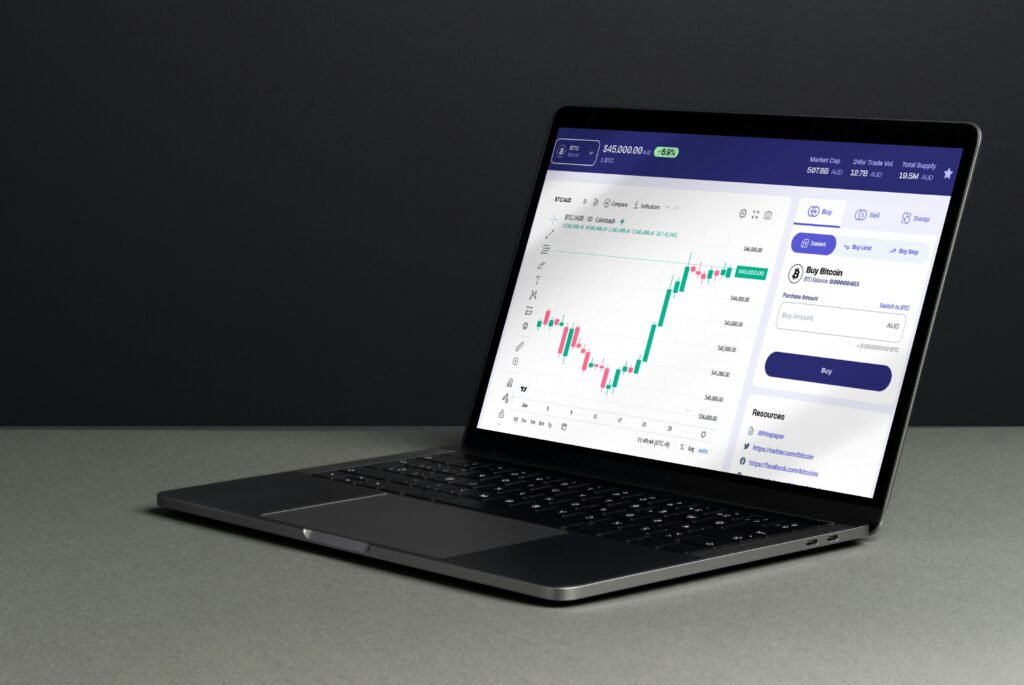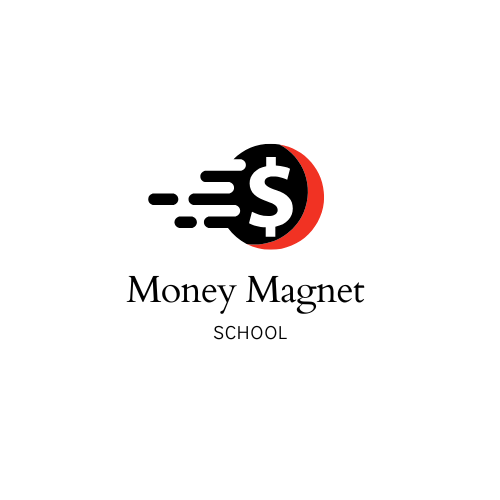Table of Contents
What Is a Brokerage Platform? A Beginner’s Guide
Imagine trying to invest your money in the stock market without knowing where to start. You’ve heard about stocks, mutual funds, and maybe even ETFs, but the actual “how” of it all remains a mystery. That’s where a brokerage platform comes in — it’s the place where investing truly begins for most people.
A brokerage platform is much like the dashboard of a car — it doesn’t move the vehicle itself, but it gives you the tools to drive in the right direction. It’s a secure, interactive space (usually an app or website) where you can create an account, transfer money, and begin investing in a wide range of financial products.
Gone are the days when investing was reserved for Wall Street elites or people with high-powered financial advisors. Thanks to modern brokerage platforms, anyone with a smartphone and a little financial curiosity can start investing — often with as little as $10.
But calling it just a tool for buying and selling stocks doesn’t do it justice. These platforms often come loaded with educational resources, interactive charts, stock screeners, financial calculators, and even AI-powered suggestions. They are your gateway not just to markets, but to learning how those markets function.
Why Does It Matter for Beginners?
For beginners, it’s not just about access — it’s about confidence. Brokerage platforms take the complexity out of investing. They simplify the jargon, automate parts of the process, and present financial information in a way that’s understandable — even if you’ve never taken an economics class.
In fact, one of the biggest benefits of using a brokerage platform today is the low barrier to entry. Most platforms don’t require large deposits. Some even offer fractional shares, meaning you can invest in big companies like Apple or Tesla without buying a full share.
Investing is no longer something you need permission to do. With the right platform, you’re in the driver’s seat from day one.

Key Functions of a Brokerage Platform
Once you’ve created an account on a brokerage platform, you’ll find that it offers far more than just a “buy” and “sell” button. These platforms are built to serve as your personal investing control panel — a place where you can track your money, explore new opportunities, and make informed decisions every step of the way.
Let’s unpack what a typical brokerage platform does — not just technically, but practically, from an investor’s perspective.
1. Placing Trades: How You Invest
Think of your brokerage account like a remote control for the stock market. You’re not buying anything physically — you’re making a request that gets routed through digital infrastructure. Whether you want to invest in shares of a company, buy into a mutual fund, or try your hand at ETFs, the platform handles the backend.
But placing an order isn’t always as simple as hitting “buy.” You’ll see options like:
- Market orders, which act like “buy it now” buttons
- Limit orders, where you decide the maximum you’re willing to pay
- Stop-loss orders, kind of like emergency exits if prices drop too far
These features help investors stay in control, especially when market conditions change quickly.
2. Keeping Track of What You Own
A brokerage platform also acts like a digital portfolio binder. Everything you invest in — from stocks to bonds — is displayed in one place, often with colorful charts showing how your money is spread across different types of investments.
Want to know how your tech stocks are performing this month? It’s there. Curious how much of your money is in international assets versus local ones? One click away.
Some platforms even offer alerts if your portfolio becomes too risky or too concentrated — a helpful nudge for newer investors who might not spot the warning signs on their own.
3. Doing Your Homework Before You Invest
Good investors ask questions before committing money. Brokerage platforms make this easier by giving you access to research tools like:
- Company profiles
- Financial history
- Charts and trends
- Expert opinions or analyst ratings
Instead of opening five tabs and hopping between finance sites, you can analyze your choices all in one place. For a beginner, this isn’t just convenient — it builds confidence.
4. Learning While You Grow
The best platforms don’t assume you’re a finance pro. They include educational sections that break down everything from what a dividend is to how to build a retirement portfolio. Some even let you “practice” trading with virtual money before investing real cash, like learning to drive in a simulator before getting on the road.
Over time, this access to mini-courses, blog content, and walkthroughs turns your brokerage app into a financial learning hub.
5. Seeing the Market in Real Time
If you’ve ever watched a stock price jump or fall in seconds, you know how fast the markets move. Most platforms give you real-time pricing and updates. That means you’re not guessing based on yesterday’s news — you’re seeing what’s happening as it unfolds.
This feature is especially useful if you’re looking to act quickly, say, during a company’s earnings report or a breaking news event. And if you’re more of a long-term investor, live market data still helps you understand the rhythm of the market.

Different Types of Brokerage Platforms
When it comes to investing online, one size doesn’t fit all. Brokerage platforms come in different forms, and choosing the right one can feel a lot like shopping for shoes. You wouldn’t wear hiking boots to a beach, right? Similarly, not every investor needs the same level of support, cost structure, or technology.
Let’s look at the major “personalities” of brokerage platforms through the lens of how real investors think and act.
1. The Personalized Coach: Full-Service Brokerages
Think of this as hiring a personal trainer for your money. A full-service brokerage offers more than just access to investments — it gives you someone (usually an advisor) who helps craft a long-term plan and checks in regularly.
These platforms are ideal for those who:
- Don’t feel confident making investment decisions solo
- Have significant savings or complex financial goals
- Prefer a long-term relationship with a real human advisor
That said, this level of attention comes at a price. Expect account minimums and service fees. You’re paying for experience, strategy, and customization — not just transactions.
2. The Self-Starter’s Playground: DIY Online Brokers
This type of brokerage is built for those who say, “I’ll figure it out myself.” It provides the tools — screeners, charts, data feeds — and lets you run the show. You decide what to invest in, when to buy or sell, and how much risk to take on.
Investors who love this approach often:
- Enjoy research and decision-making
- Want low or zero commissions
- Don’t need someone checking over their shoulder
However, it also means the responsibility is yours. If something goes wrong, there’s no advisor to call. But for many, the trade-off is worth the control and savings.
3. The Silent Assistant: Robo-Advisors
Imagine setting your financial goals, answering a few questions, and then letting someone else take the wheel quietly and efficiently. That’s what robo-advisors do. These automated platforms create a portfolio for you and keep it balanced, often using algorithms and low-cost ETFs.
It’s ideal if you:
- Don’t want to spend time managing investments
- Prefer consistent, long-term growth without micromanaging
- Are you okay with handing over control to a system
You won’t get stock tips or market commentary. But you will get peace of mind and simplicity, often for a fraction of the cost of a human advisor.
4. The Hybrid Hub: Modern All-in-One Platforms
Most brokerage platforms today combine multiple approaches. They offer DIY trading tools, automated investing features, and educational content all under one roof. Some even allow users to toggle between self-directed investing and managed portfolios.
These platforms are built for flexibility and attract:
- Users who like to experiment
- New investors who want room to grow
- People are looking for both freedom and guidance when needed
They’re a great fit if you’re still figuring out what kind of investor you want to be, or if your preferences change over time.

How a Brokerage Platform Works – From Click to Cash
Let’s say you’re sitting on your couch one evening and decide it’s time to take charge of your money. You’ve read a few articles, watched a YouTube video or two, and now you’re ready to try investing. You download a brokerage app. It looks sleek. It’s fast. But what’s happening behind those buttons?
Here’s a look under the hood — from the first login to your first trade and beyond.
Step 1: Creating Your Financial Gateway
Opening an account on a brokerage platform feels a lot like signing up for any modern app — email, password, identity confirmation. But this isn’t a social media profile — it’s a financial account that involves regulations. So you’ll answer questions about your income, your risk tolerance, and your goals.
It’s not just for fun — the platform uses this to tailor your experience. More importantly, regulatory bodies require this information to keep investments secure and traceable. You’re stepping into the financial system, and that system is built on rules.
Step 2: Funding — The First Leap
Once your account is live, it’s time to move money into it. This part feels familiar — like topping up a digital wallet. You transfer funds from your bank account. Sometimes, the money shows up instantly; other times, there’s a wait.
What matters is: this is your capital, and where it sits now determines how you’ll shape your future. Whether it’s $50 or $5,000, your money is now on deck, ready to work.
Step 3: Making a Move — Placing a Trade
Now comes the pivotal moment. You browse a few stocks. Maybe you’re curious about Tesla. You tap “Buy.” But what’s going on here?
Behind the scenes, your platform is sending that order through a network of market makers, exchanges, and sometimes internal systems that match your order to a seller. It sounds complex, but it all happens in milliseconds.
What’s amazing is that a few taps from your phone send a signal into a market worth trillions — and just like that, you own a piece of it.
Step 4: Tracking What You Own
Once you’ve made your first investment, your dashboard lights up. Suddenly, your balance reflects more than just cash — it reflects ownership. This is your portfolio now. Over time, the numbers change. Some days it grows. Other days, not so much.
Your brokerage platform now becomes a control panel. You can see:
- Where your money is allocated
- How each asset performs
- Whether you’re heading toward your financial goals
It’s no longer theoretical. It’s real. It’s yours.
Step 5: Automating, Adjusting, and Learning
As you grow more comfortable, the platform becomes more than a place to check balances. It offers tools — scheduled investments, reinvestment options, alerts when stocks dip or spike, and even insights to help improve your decision-making.
And for those who don’t want to be glued to the screen? There are auto-pilot options: recurring contributions, suggested rebalancing, and long-term planning modules.
The point is: once you’re in, the tools are there to help you grow, not just transact.
Step 6: Taking Money Out — And Understanding the Flow
Eventually, you might want to withdraw — maybe you’ve sold a stock and want to move the profit back to your bank. It’s not instant. There’s usually a short waiting period (often called settlement time), and then the funds are released.
But the process is transparent, and the good platforms make it clear what’s happening. It’s your money, after all.

Pros and Cons of Using Brokerage Platforms
Investing today looks a lot different from it did a decade ago. Thanks to brokerage platforms, anyone with internet access can start building a portfolio. While this access is a major step forward, it also comes with responsibilities and trade-offs.
Here’s a straightforward breakdown of the real-world advantages and disadvantages of using these platforms, so you can make an informed decision before investing your money.
Pros of Using Brokerage Platforms
• Open to All Income Levels
Brokerage platforms remove traditional barriers. There’s no need for large capital, complex paperwork, or financial advisors. Whether you have $10 or $10,000, you can get started.
• Simple and Fast Transactions
You can buy or sell investments within seconds. No calls, no delays — just search, select, and place the order. This level of speed has changed how people manage their investments.
• Control in the Investor’s Hands
You decide what to invest in and when. Platforms don’t push products unless you opt into that. This independence suits people who prefer to manage their own financial path.
• No-Fee or Low-Fee Trading
Most platforms allow commission-free stock or ETF trading. This means you keep more of your money invested instead of losing small chunks to fees each time you trade.
• Learning by Doing
Many platforms offer helpful tools like practice portfolios, in-app tutorials, and performance tracking. These features allow beginners to learn through experience rather than just theory.
Cons of Using Brokerage Platforms
• Temptation to Trade Frequently
With how easy it is to buy and sell, many beginners trade too often. This can hurt long-term returns and lead to decisions based on emotion, not strategy.
• Overwhelming for Beginners
Some platforms offer too many features too soon. When you’re faced with technical charts, news feeds, and trading options you don’t yet understand, it’s easy to make rushed or confused decisions.
• Support Can Be Limited
Getting help isn’t always quick. Many services rely on FAQs, bots, or slow email replies. In urgent situations, this lack of human interaction can be frustrating.
• Not All Costs Are Clear
While trading may be free, other fees can apply, like foreign transaction charges, currency conversion fees, or monthly fees for advanced features. These add up silently.
• Security Risks on Newer Platforms
Established platforms usually follow strict security standards, but lesser-known services may lack advanced protections. Without proper safeguards, your account could be more vulnerable to breaches or misuse

FAQs About Brokerage Platforms
Q1: Do I need a lot of money to open a brokerage account?
No. Many brokers today allow you to start with as little as $0. You can invest small amounts in fractional shares or low-cost ETFs.
Q2: Is my money safe on these platforms?
If the broker is regulated and insured (e.g., SIPC or your local regulator), your money is generally safe from fraud or platform failure. But remember: the market itself carries risks.
Q3: What’s the difference between a broker and a platform?
The broker is the licensed entity handling your trades. The platform is the digital interface (app or website) you use to access that service.
Q4: Can I lose money?
Yes. Investing always involves risk. A platform may give you the tools, but your decisions (and the market’s movement) determine your gains or losses.
Q5: Can I withdraw my money anytime?
Yes, in most cases. But depending on your payment method or country, it may take a few days and could include small processing fees.
Conclusion – Your First Step Toward Smarter Investing
Getting started with a brokerage platform might feel like a big leap, but it’s a series of small steps. And by reading this guide, you’ve already taken the most important one: choosing to understand before you act.
You don’t need to master every detail on day one. Most investors learn by doing — starting with small amounts, testing different tools, and adjusting their strategy over time. What matters is that you begin with intention, not guesswork.
Choosing the right platform, knowing how to avoid costly mistakes, and understanding your goals will help you make clearer choices. You now know that not all brokers are the same, and not all features are designed with your best interest in mind. That awareness puts you ahead of most beginners.
Investing isn’t about getting rich quickly. It’s about building something over time. That could mean saving for your future, growing a second income stream, or simply learning how money works in the real world. All of those are valid — and they all start the same way: with a first move.
Don’t rush it. Don’t worry about being perfect. Stay focused, stay consistent, and review your progress regularly. Your account isn’t just a place to buy assets — it’s a place to grow experience, discipline, and confidence.
You’re not just opening a brokerage account. You’re building a financial habit that can serve you for years.
Let this guide be your starting point. The next move is yours.
